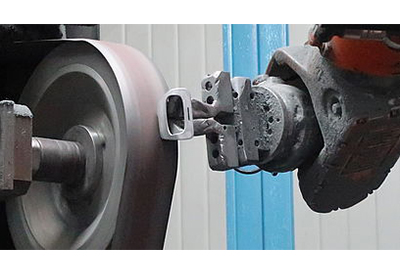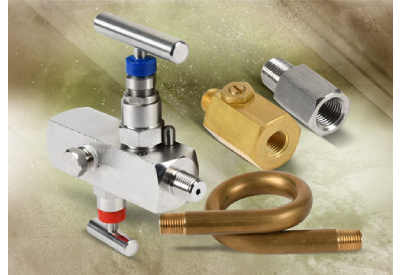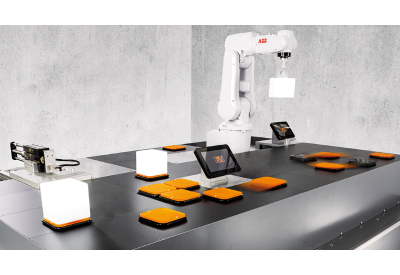Important Purchasing Tips for Grippers

December 24, 2020
Robots – be they conventional industrial robots, modern lightweight robots or trendy cobots – open the doors to new automation applications and help to make them more efficient and process-safe. The end effector or gripper is a central element as a link between the robot and the workpiece. The trend towards ever smaller batch sizes and the associated need for gripper flexibility have led to a paradigm shift over the years. This means that the end effector is always more the master and less the slave in the system.
With the right gripper, the performance, machine uptime and safety of the operating personnel of an automation system can be optimized. But how do I find the right gripper for my requirements? Almost all users ask themselves this question at some time or another, and you too have certainly looked for a suitable gripper and struggled to see the wood for the trees. In a short checklist, we have now defined the criteria to be considered, which you can use as a basis for your gripper selection.
First of all the user must be aware of the requirements that are placed on the gripper itself. For example, many users attach importance to the fact that the installed gripper components can be used universally. You are looking for a gripper that can not only handle all handling tasks, but also reduces storage costs, parts list diversity and replacement costs to a minimum. Another important point in the selection is the properties and shape of the workpiece to be gripped. Is the workpiece fragile and/or particularly heavy? Does the material to be gripped have a special geometry or does it possibly come directly from a casting furnace and is therefore hot? For example, a suction pad/vacuum gripper may be the first choice for fragile goods, whereas a robust large-stroke gripper would be more appropriate for a heavy cast iron blank from the forge.
In addition to the material to be gripped, the length and shape of the gripper jaws (also called gripper fingers) must also be taken into account. Another important factor in the selection of the correct gripper is the question of friction between the workpiece and gripper jaws. Force closure is the most common gripping method, in which friction plays a decisive role. Here, the contact surfaces hold the workpiece by means of the frictional force. The so-called friction (force) coefficient between the gripper jaw and the workpiece is decisive here for determining the required gripping force. The coefficient of friction (force) is permanently influenced by the material pairing between workpiece and gripper jaw. Added Features on the jaw surface (e.g. rubber jaws) can improve the grip and thus increase the coefficient.
The respective stroke per jaw is also an important factor. If the objects to be gripped are of different sizes, the jaw stroke is an important factor. If no gripper jaw change is to be carried out, it must be dimensioned so that different workpiece geometries can be gripped.
Which type of gripper you should choose depends strongly on your specific application. Today, there is a wide range of grippers for the most diverse applications. The most common gripper types are parallel grippers, centric grippers, angle grippers, rotary grippers and vacuum grippers.
Grippers are designed as part of a robot system to be rigid and weight-optimized. To ensure that your gripper can continue to work reliably in the future, vibrations – triggered e.g. by the robot – should be taken into account. This is because a gripper is subject to constantly changing force effects in all directions due to the robot acceleration and deceleration. The robot path planning has a decisive influence on the vibration behavior of the gripper. Incorrect programming or an insufficiently rigid base frame design can cause vibrations at the gripper, which have a negative effect on the gripper and can lead to premature failure.
Safety should always have the highest priority when choosing a gripper. In the mandatory risk analysis, the user defines his safety factor. Here it is important to plan for the dangers that can arise from the system or a gripper and to eliminate these in your future application: To ensure that the gripper holds the workpiece securely in the event of a compressed air failure, standard grippers are fitted with, among other things, an internal spring which pretensions the piston or an additional external safety valve which blocks the compressed air supply to the gripper in the open or closed position.
With an HRC gripper (gripper for human-robot collaboration or collaborative robotics), one goes a step further and ensures the safety of the operating personnel in particular. The Zimmer Group HRC-03 gripper, for example, has no sharp edges and is designed in such a way that its rounded shape on all sides virtually eliminates the possibility of accidental catching. This functionality in combination with mechanical self-locking of the gripper jaws and the associated gripping force maintenance offer maximum safety in every application. Even in the event of an emergency stop or power failure. All HRC grippers of the Zimmer Group including the HRC-03 meet the strict requirements of the protection principles according to ISO/TS 15066 (HRC standard) and are BG/DGUV certified.
After you have given final thought to the gripping force required and the forces and torques acting in your application, you now only need to determine the number of grippers and observe the operating pressure (for a pneumatic gripper). Most manufacturers assume a pressure of 6 bar in their specifications. However, if you have less operating pressure available for your gripper, consider the resulting reduction in gripping force.
Then you are almost there. After the appropriate selection of the gripper accessories, e.g. a tool changer, a rotary manifold/distributor, etc. a final audit follows. Are all requirements fulfilled? Is the mass of the gripper including all attachments and the workpiece lower than the maximum payload of the axis or the robot? If you can answer these two questions with “YES”, it is recommended to download a CAD model (if available) from the gripper manufacturer’s website. If “NO”, then you must go through the checklist again and make adjustments or possibly consider purchasing a custom gripper.



